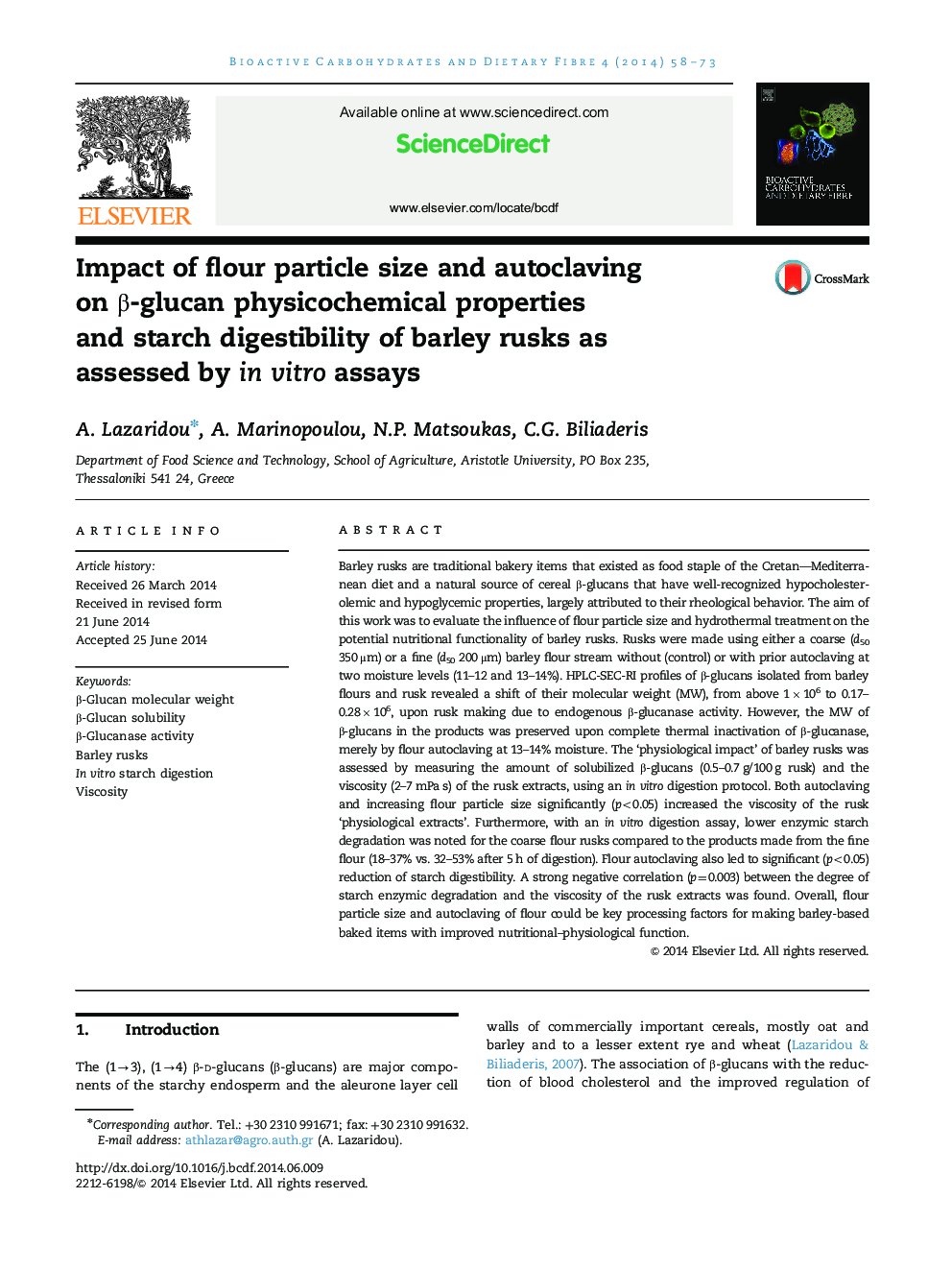| Article ID | Journal | Published Year | Pages | File Type |
|---|---|---|---|---|
| 1413038 | Bioactive Carbohydrates and Dietary Fibre | 2014 | 16 Pages |
•Endogenous β-glucanase activity of barley flour decreases β-glucan MW in rusks.•Tempering of barley flour before autoclaving preserves the β-glucan MW in rusks.•Autoclaving of barley flour decreases the in vitro starch digestibility in rusks.•Increase of flour particle size decreases starch digestibility in barley rusks.•Starch digestibility of rusks negatively correlated with viscosity of their extracts.
Barley rusks are traditional bakery items that existed as food staple of the Cretan—Mediterranean diet and a natural source of cereal β-glucans that have well-recognized hypocholesterolemic and hypoglycemic properties, largely attributed to their rheological behavior. The aim of this work was to evaluate the influence of flour particle size and hydrothermal treatment on the potential nutritional functionality of barley rusks. Rusks were made using either a coarse (d50 350 μm) or a fine (d50 200 μm) barley flour stream without (control) or with prior autoclaving at two moisture levels (11–12 and 13–14%). HPLC-SEC-RI profiles of β-glucans isolated from barley flours and rusk revealed a shift of their molecular weight (MW), from above 1×106 to 0.17–0.28×106, upon rusk making due to endogenous β-glucanase activity. However, the MW of β-glucans in the products was preserved upon complete thermal inactivation of β-glucanase, merely by flour autoclaving at 13–14% moisture. The ‘physiological impact’ of barley rusks was assessed by measuring the amount of solubilized β-glucans (0.5–0.7 g/100 g rusk) and the viscosity (2–7 mPa s) of the rusk extracts, using an in vitro digestion protocol. Both autoclaving and increasing flour particle size significantly (p<0.05) increased the viscosity of the rusk ‘physiological extracts’. Furthermore, with an in vitro digestion assay, lower enzymic starch degradation was noted for the coarse flour rusks compared to the products made from the fine flour (18–37% vs. 32–53% after 5 h of digestion). Flour autoclaving also led to significant (p<0.05) reduction of starch digestibility. A strong negative correlation (p=0.003) between the degree of starch enzymic degradation and the viscosity of the rusk extracts was found. Overall, flour particle size and autoclaving of flour could be key processing factors for making barley-based baked items with improved nutritional–physiological function.
Graphical abstractFigure optionsDownload full-size imageDownload as PowerPoint slide
